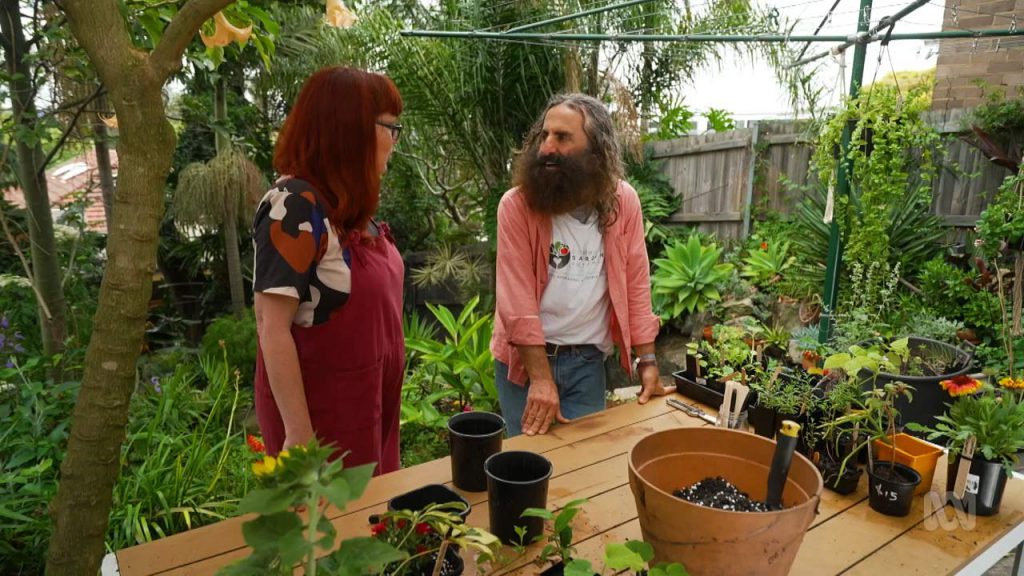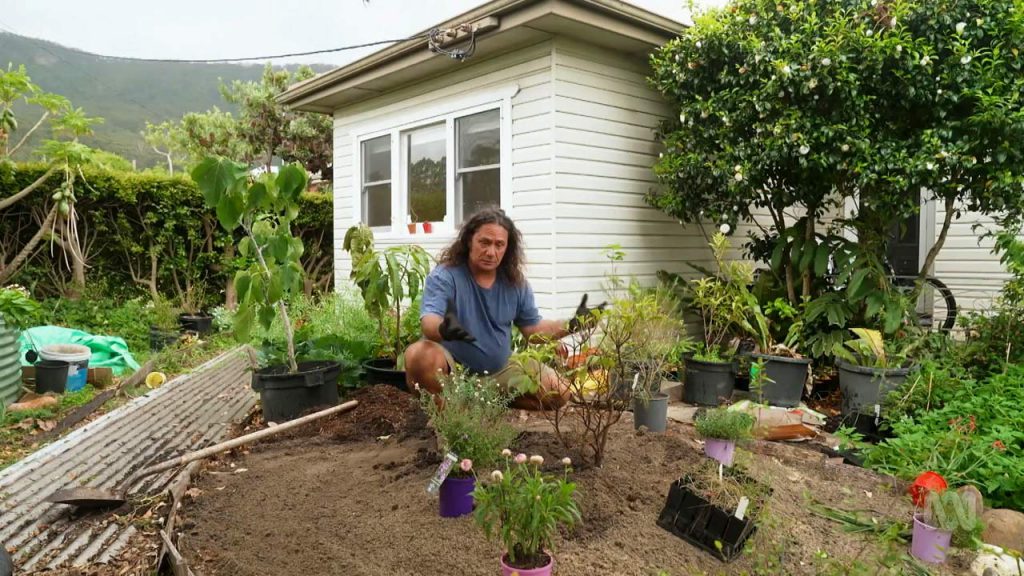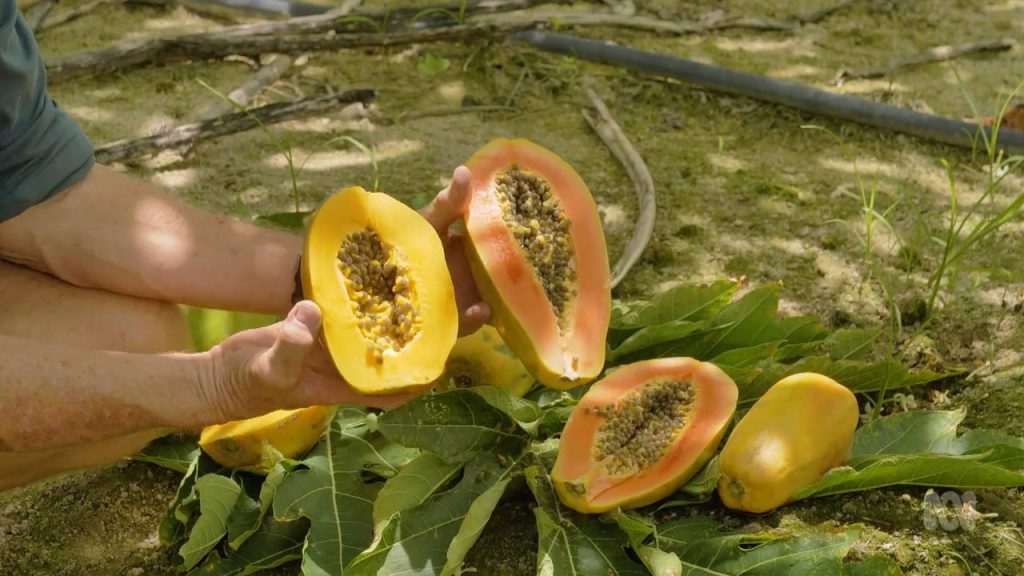Gardening Australia episode 33 2022: Costa plants pots of both potato and sweet potato varieties, Jane visits the garden of a collector who has an obsession with Eremophila, Tino meets a volunteer group that focuses on empowering new arrivals to Australia, Sophie showcases some of the beautiful flowering plants in her garden, Josh transitions a sandpit into a garden bed.
Inspiring, entertaining and full of practical advice, join Costa Georgiadis and the team as they unearth gardening ideas, meet avid gardeners and look at some of the most inspiring gardens from across the country.
Gardening Australia episode 33 2022
One Potato, Two Potato
Costa plants pots of both potato and sweet potato varieties, to test which type will go best in his garden—and pass the taste test. Potatoes and sweet potatoes are versatile ingredients and easy to grow with the right care and plenty of sunshine. Whilst they have different growing requirements, they can both be planted in spring, enjoy full sun, and are great for containers.
Large containers, such as 85L plastic pots with lots of holes, are a great choice for both crops. Growing in pots also makes it easier to rotate crops and you can move them into the sunshine.
Whilst they are both similar starchy tubers they are not even in the same family! Potatoes are from the Solanaceae family of nightshades that includes eggplant, peppers, and tomatoes. Sweet potatoes are in the Convolvulaceae family, related to plants like morning glory and water spinach.
Every Eremophila – Gardening Australia episode 33 2022
Jane visits the garden of a collector who has an obsession with Eremophila. This garden is the product of decades of work of a master plantsman, Russell Wait, who has collected over 400 varieties of Eremophila. Jane explains the provenance of this group of plants, ‘Eremophila are usually associated with Australia’s harsh outback. In fact, their name translates from Greek, to ‘desert lover’.’
To amass this collection, Russell has travelled the desert regions of Australia with a special license to collect. Almost all the plants in his collection are grown from cuttings collected on these trips. He takes an annual Eremophila expedition to Western Australia, almost every year since 1995.
This keen interest in seeking out Eremophila in their native environment has led Russell to discover new species, and to lead the way in their cultivation. He says, ‘you get quite a thrill travelling up the road in the agricultural country in Western Australia, wonder what that bush is out there, and it ended up being a brand new species.’ Russell painstakingly records the plants he comes across, in order to determine the species, ‘I take pressings, photographs, GPS readings all to be sent to the herbarium for them to study… In this case, they named the plant after me – E. waitii’
His wife, Beryl, even has a few plants named after her as well, the cultivars Eremophila ‘Beryl’s Blue’ and Eremophila ‘Beryl’s Gem’. Russell shows Jane around the incredible diversity of Eremophila in his collection—from prostrate groundcovers to towering tall shrubs, with flowers from dusky blue to vibrant yellow and pink.
Sprouting Connections
Tino meets a volunteer group that focuses on empowering new arrivals to Australia with the tools and knowledge to garden in their new home.
The Welcome Gardeners group started as a seed collection and sharing enterprise at the Migrant Resource Centre Tasmania. Every few months a group of volunteers get together to pack seeds that are then available for visitors, mostly new arrivals to Australia, to take home for free. It’s also a social event to meet like-minded people and share gardening and cooking knowledge.
Coordinator Sharee McCammon says, “they are all volunteers, most of them are gardeners, a lot of them are new gardeners, and it’s been nice that we’ve been able to share the natural generosity of a garden.” Many people that have picked up seeds and started growing at home return to assist the group and help other gardeners.
A hugely positive response led to the group expanding their work to help source other resources such as tools and soil, and form working bees to help people get started in new gardens. Sharee says the most important thing they do “is networking. The whole idea is to help new families settle in with the soil, connect to a new environment, and to also connect them with community.”
Pollinator Provision
Sophie showcases some of the beautiful flowering plants in her garden that create a real buzz with pollinators and with people. In springtime, the days are longer and warmer and there’s colour everywhere you look. This is the time when gardeners get to see the rewards of their efforts — seeing a plant flower that you’ve planted is such a thrill. What makes it even more special is knowing that those flowers are also great for the pollinators.
A flowering garden is a real feast for the eyes, but it’s even better when it’s buzzing with life and providing food for important insects. Pollinators include bees, wasps, butterflies, moths, bats and beetles. They’re critical for our ecosystems and agriculture as most plant species need them to reproduce. Research tells us that their survival relies especially on the diversity of flowering plants.
Grown Up Garden
Josh transitions a sandpit into a garden bed, updating this area of the garden that was put aside for play into a place for plants.
‘As well as being a productive space, the backyard also served as a destination for discovery, interaction with nature, and of course, play.’ Gardens should change with you as your values and life transforms over time. Today, Josh will transition an area that was earmarked for child’s play, planting it out with some beautiful native and exotic plants, prioritising texture and structure.
Josh is planting out the sandpit area in his yard, now that his kids have grown up and aren’t using it, he wants to prioritise beauty throughout all seasons, while accommodating for different shade and sun levels. ‘The kids have grown up and moved on from their sandpit. I always anticipated that this would happen, when we built the sandpit, I anticipated it would become a feature garden bed.’
Josh is always talking about Perth’s sandy soils, but this time, he is literally planting in a sandpit! The plants chosen must appreciate free draining soils. However, he will also undertake standard sandy soil amelioration techniques to boost the soil; adding compost and garden soil. This is a seasonally very shady site a deciduous shade tree provides filtered shade throughout the warmer months of the year. In winter it loses its leaves fully and lets warming sun in, but there is a lot of leaf fall in autumn. ‘The overall structure will remain as is. Elements like the logs, stumps, and rocks are good bones, adding dimension to the space. Planting around them will work well.’




